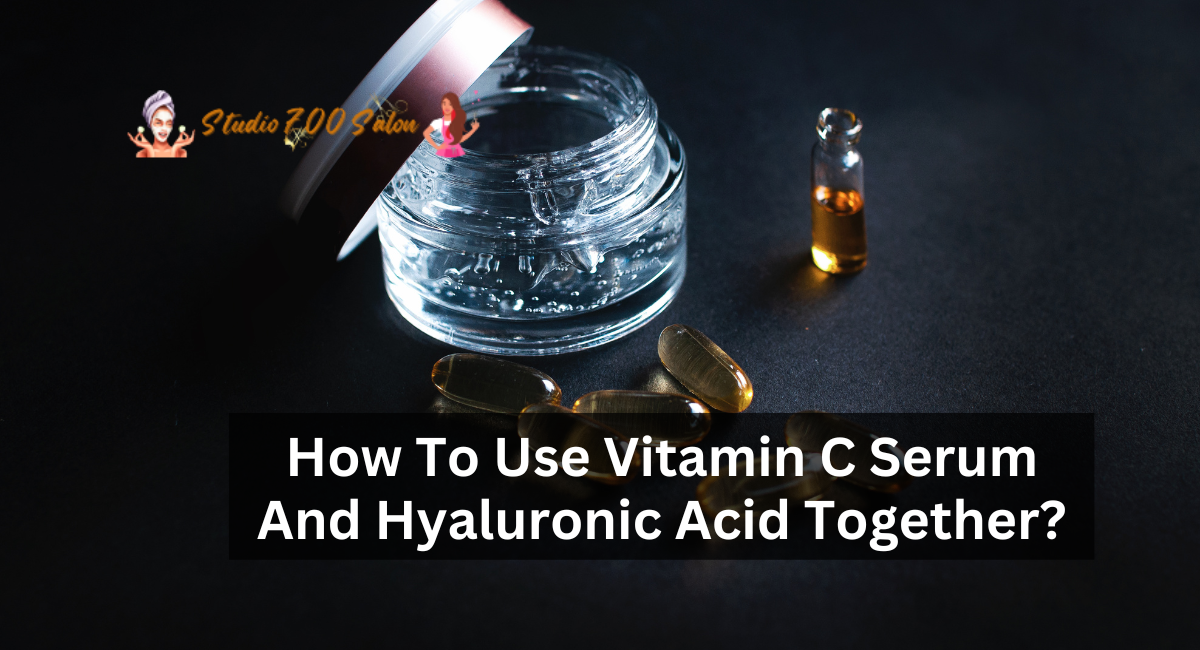The combination of vitamin C serum and hyaluronic acid in skincare has taken the beauty world by storm. When combined, these two potent substances can do wonders for your skin.
In this article, we will look at the advantages, how to apply them correctly, and how this powerful pair may change your skincare regimen.
How To Use Vitamin C Serum And Hyaluronic Acid Together?
Let’s get right to it. Vitamin C outperforms hyaluronic acid. It loses its efficacy when vitamin C is exposed to air, light, or water.
To what degree can an ineffectual serum help? After washing your face, apply the serum, but make sure your skin is completely dry.
Allow it to sit on your skin for a few minutes before proceeding. If you do not allow the serum to absorb, other products may deactivate it.
The second line of defense is hyaluronic acid. Even if your skin isn’t completely dry, hyaluronic acid can take moisture from the environment.
However, if you want to add moisture to your skin, spritz it with a water-based toner only after the vitamin C serum has been entirely absorbed. After that, seal in the serums with a moisturizer to keep the moisture in.
Before Combining Hyaluronic Acid With Vitamin C
Take caution not to combine any components without first conducting thorough study. It only takes one bad combination to ruin your skin. Fortunately, hyaluronic acid and vitamin C complement each other.
You don’t need to soak your skin in hyaluronic acid to gain its benefits. A small amount goes a long way. This also applies to vitamin C – two to four drops of either serum is all you need.
Choose the best moment to apply: Hyaluronic acid is not limited to a single time of day. You can apply it in the morning to hydrate your skin and in the evening to recover the moisture your skin has lost.
Choose any choice if you’re just starting to incorporate hyaluronic acid into your routine. Vitamin C has an impact that lasts for more than 24 hours, so you can take it in the morning once a day.
The Advantages Of Combining Hyaluronic Acid With Vitamin C
Both of these substances serve distinct functions, and when combined, you may end up with a more potent solution.
Dermatologists believe that when the two are combined, they enhance each other’s potency. Because they both have anti-aging characteristics, combining them results in their unique properties.
Vitamin C protects and rejuvenates, while hyaluronic acid brightens and plumps — restoring your skin to its youthful splendor. Even when used separately, both components operate optimally at distinct pH levels.
Is There Any Danger In Combining Hyaluronic Acid And Vitamin C?
Fortunately, unless you have an allergy to hyaluronic acid or vitamin C, the combination is both safe and effective. However, before beginning any new skin care program, always perform a patch test.
Apply a modest amount of hyaluronic acid and vitamin C serum on an out-of-the-way (but noticeable) part of your face to perform a patch test. For 48 hours, keep an eye on the region for signs of redness, irritation, hives, or other potential unpleasant reactions.
If your skin does not become sensitive after 48 hours, you should be fine to begin using it on your full face! Keep in note that patch tests do not always detect 100% of sensitivity. When introducing new products, go slowly at first and give your skin plenty of time to adjust.
Vitamin C is also considerably more likely to cause a reaction than hyaluronic acid because it is a naturally occurring substance in your body. If you have sensitivities, you could try just using a hyaluronic acid serum to see if it helps.
And, even after taking hyaluronic acid, always use moisturizer. Because the skin seeks hydration and moisture, dry and potentially dehydrated skin causes many indications of aging and other skin care difficulties.
Other Suggestions For Using Them Both
Here are some tips for using vitamin C and hyaluronic acid together:
1. Use Hyaluronic Acid At Night
While you can use both components whenever you want, experts generally recommend using vitamin C during the day. Vitamin C is a powerful antioxidant with effects that last for more than 24 hours.
You’ll only need to apply it once a day, usually in the morning, noting that the antioxidant can provide an extra layer of protection in addition to your sunscreen.
Because HA’s primary function is hydration, there is no best time to apply (i.e., you can apply both morning and night).
Still, you can take vitamin C in the morning and HA in the evening. In the evening, you’ll have even more benefits since you won’t be layering it with vitamin C.
2. Look For A Vitamin C Serum That Contains HA
For stability and maximum benefits, it’s best to use them separately. However, many vitamin C serums already include a dose of hyaluronic acid, so you don’t necessarily have to add a separate step.
These serums often feature a more stable version of vitamin C to enable them to work well with other skin-loving components, such as Kora Organics’ Noni Bright Vitamin C Serum.
3. Incorporate HA Into Your Moisturizer
Hyaluronic acid is used into a variety of topicals, serums, moisturizers, and masks. If you don’t enjoy layering serums, you could always use a HA-containing face cream, such as Summer Fridays’ Cloud Dew Gel Cream Moisturizer.
Including vitamin C serum and hyaluronic acid in your skincare routine can be transformative. These components provide a potent combination of hydration, protection, and regeneration, resulting in glowing and youthful skin. Accept this dynamic combo and watch your skincare fantasies come true.
Thanks for reading. I hope you find it helpful.










